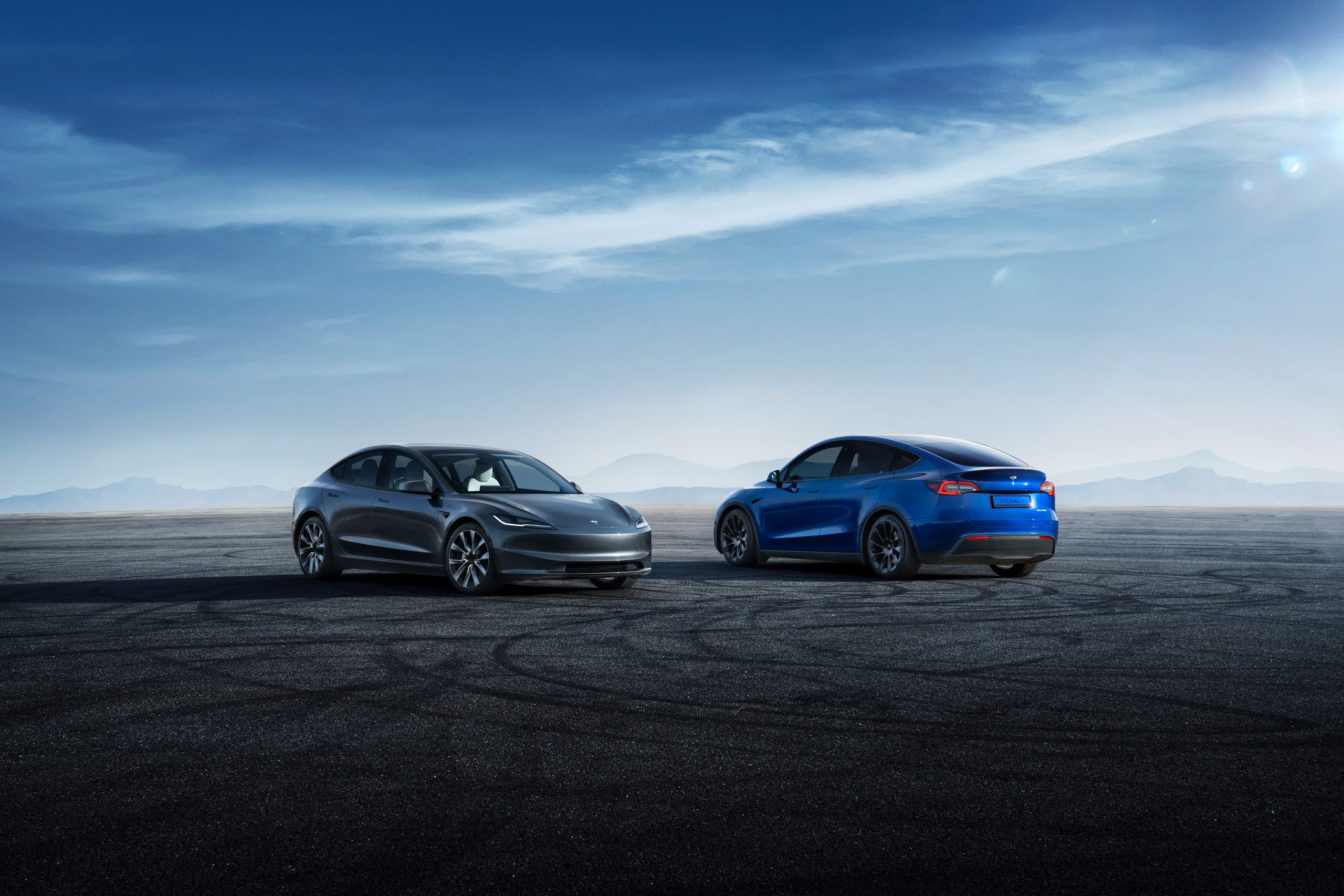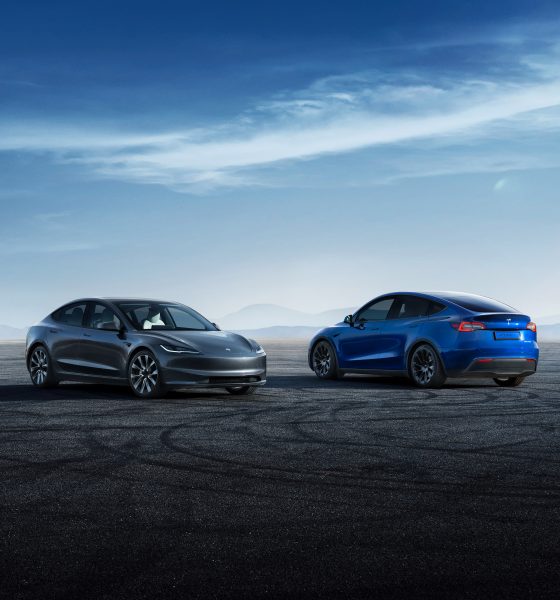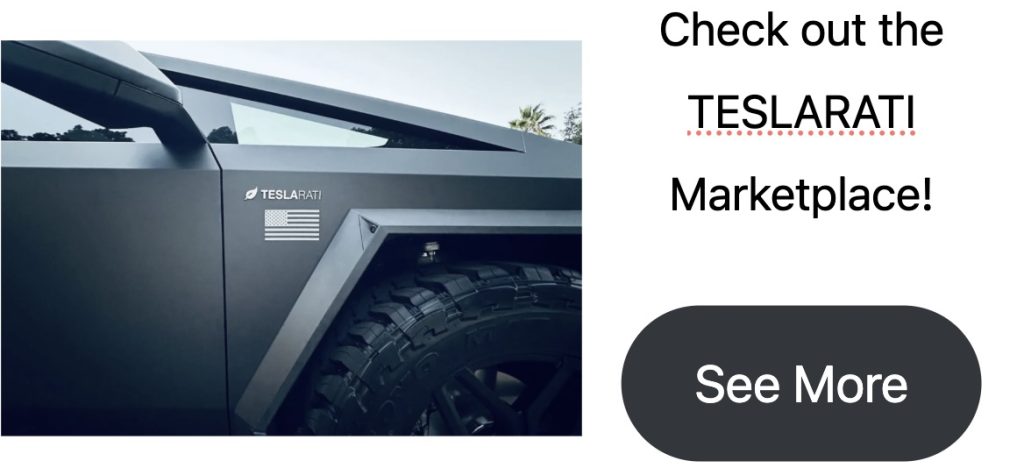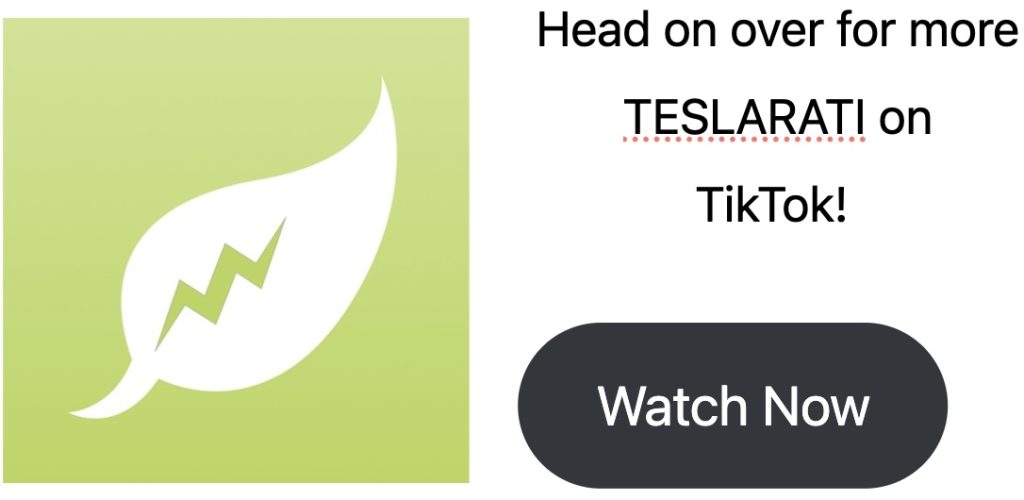Tesla remained the dominant seller of battery-electric vehicles (BEVs) in the U.S. last year, with early estimates showing that the company sold more than most of its competitors combined. While data isn’t yet available for every automaker selling BEVs in the U.S., we took the time to compile some of the earliest estimates available for 2024 BEV sales, giving us an idea of where Tesla’s competitors landed in the year’s sales.
According to Cox Automotive, automakers sold 1.3 million BEVs in the U.S. in 2024, making up 8 percent of the total market share of nearly 16 million vehicles sold across powertrain types. EV sales also jumped in Q4 to 356,000 vehicles, marking a 12 percent jump year over year.
Cox also expects EV deliveries to surpass 1.5 million in the U.S. in 2025, while 2023 deliveries topped out at 1.2 million.
General Motors (GM) and Ford took up the second and third spots in U.S. BEV sales in 2024, both following Tesla, which held first place decisively. GM’s BEV sales were made up of the Chevy Equinox EV, the Chevy Blazer EV, the Chevy Silverado EV, the Cadillac Lyriq, the GMC Hummer EV, the GMC Sierra EV, and the BrightDrop EV600 commercial van. Ford’s BEV sales were comprised of the Mustang Mach-E, the F-150 Lightning, and the E-Transit.
Toyota was one of the few other manufacturers to release specific U.S. and BEV data, with the latter being made up of those from the BZ4X and Lexus RZ. The vast majority of Toyota’s “electrified” vehicles is comprised of hybrid and plugin hybrid powertrains, along with the Mirai which sports a fuel cell powertrain. All of these electrified vehicle types are excluded from the figure below.
Hyundai’s BEV figure was made up of Ioniq 5, Ioniq 6, and Kona BEV sales, the latter of which is also offered in a hybrid version. The company’s subsidiary Kia had BEV sales including the battery-electric EV6 and EV9, and while the automaker also sells a BEV version of the Niro, it did not separate the vehicle’s hybrid and BEV versions in its report released last week.
It’s worth noting that Tesla doesn’t share figures for individual market sales, though the maker was estimated by Cox Automotive to have sold about 633,000 units to remain the clear leader in the market. Others, such as Lucid and Rivian, deliver the vast majority of their vehicles in the U.S., though they do not break out region-specific figures. Meanwhile, similar estimates for the brands have not yet been shared publicly.
READ MORE ABOUT U.S. BEV SALES: Colorado becomes the #1 state for EV sales, beating California
Audi had 23,152 BEVs sold in the U.S. made up of its e-tron Q4, Q6, Q8, and GT lineups, while its parent company, Volkswagen, sold blank units comprised of the ID.4 and newly launched ID.Buzz, which was only sold in the market in the fourth quarter. BMW sold its battery-electric i4, i5, i7, and iX models in the U.S. last year.
Nissan’s BEVs included the Leaf and the Ariya, which saw year-to-date sales increases of 57 and 47 percent, respectively.
Cox Automotive is also expected to unveil its 2024 EV Sales report in the coming weeks, which should shed light on many of the automakers that have not shared market-specific figures.
You can see the recent estimates from Cox Automotive on the top EV makers in the U.S. in 2024 below, along with some figures directly from each automaker. Additionally, the source of the figures are linked near the bottom of the page.
How many BEVs did automakers sell in the U.S. in 2024?
- Tesla: 633,762
- GM: 114,432
- Ford: 97,865
- Hyundai: 61,797
- Kia: 56,099
- Rivian: 51,442
- BMW: 50,981
- Nissan: 31,024
- Toyota: 28,267
- Mercedes-Benz: 21,154
- Audi: 23,152
- Volkswagen: 18,183
Top 10 EV models sold in the U.S., according to Cox Auto estimates
- Tesla Model Y
- Tesla Model 3
- Ford Mustang Mach-E
- Hyundai Ioniq 5
- Tesla Cybertruck
- Ford F-150 Lightning
- Honda Prologue
- Chevy Equinox EV
- Cadillac Lyriq
- Rivian R1S
You can see detailed estimates from Cox Automotive, which were released on January 13.
Audi | BMW | Ford | GM | Hyundai | Lucid | Nissan | Rivian | Tesla | Toyota | Volkswagen
Updated 1/19: Added the latest figures from Cox Automotive estimates.
What are your thoughts? Did I miss any automakers or U.S. sales figures? Let me know at zach@teslarati.com, find me on X at @zacharyvisconti, or send us tips at tips@teslarati.com.
Study reveals less than 1% of EV owners wish to switch back to ICE

News
Tesla FSD fleet is nearing 7 billion total miles, including 2.5 billion city miles
As can be seen on Tesla’s official FSD webpage, vehicles equipped with the system have now navigated over 6.99 billion miles.

Tesla’s Full Self-Driving (Supervised) fleet is closing in on almost 7 billion total miles driven, as per data posted by the company on its official FSD webpage.
These figures hint at the massive scale of data fueling Tesla’s rapid FSD improvements, which have been quite notable as of late.
FSD mileage milestones
As can be seen on Tesla’s official FSD webpage, vehicles equipped with the system have now navigated over 6.99 billion miles. Tesla owner and avid FSD tester Whole Mars Catalog also shared a screenshot indicating that from the nearly 7 billion miles traveled by the FSD fleet, more than 2.5 billion miles were driven inside cities.
City miles are particularly valuable for complex urban scenarios like unprotected turns, pedestrian interactions, and traffic lights. This is also the difference-maker for FSD, as only complex solutions, such as Waymo’s self-driving taxis, operate similarly on inner-city streets. And even then, incidents such as the San Francisco blackouts have proven challenging for sensor-rich vehicles like Waymos.
Tesla’s data edge
Tesla has a number of advantages in the autonomous vehicle sector, one of which is the size of its fleet and the number of vehicles training FSD on real-world roads. Tesla’s nearly 7 billion FSD miles then allow the company to roll out updates that make its vehicles behave like they are being driven by experienced drivers, even if they are operating on their own.
So notable are Tesla’s improvements to FSD that NVIDIA Director of Robotics Jim Fan, after experiencing FSD v14, noted that the system is the first AI that passes what he described as a “Physical Turing Test.”
“Despite knowing exactly how robot learning works, I still find it magical watching the steering wheel turn by itself. First it feels surreal, next it becomes routine. Then, like the smartphone, taking it away actively hurts. This is how humanity gets rewired and glued to god-like technologies,” Fan wrote in a post on X.
News
Tesla starts showing how FSD will change lives in Europe
Local officials tested the system on narrow country roads and were impressed by FSD’s smooth, human-like driving, with some calling the service a game-changer for everyday life in areas that are far from urban centers.

Tesla has launched Europe’s first public shuttle service using Full Self-Driving (Supervised) in the rural Eifelkreis Bitburg-Prüm region of Germany, demonstrating how the technology can restore independence and mobility for people who struggle with limited transport options.
Local officials tested the system on narrow country roads and were impressed by FSD’s smooth, human-like driving, with some calling the service a game-changer for everyday life in areas that are far from urban centers.
Officials see real impact on rural residents
Arzfeld Mayor Johannes Kuhl and District Administrator Andreas Kruppert personally tested the Tesla shuttle service. This allowed them to see just how well FSD navigated winding lanes and rural roads confidently. Kruppert said, “Autonomous driving sounds like science fiction to many, but we simply see here that it works totally well in rural regions too.” Kuhl, for his part, also noted that FSD “feels like a very experienced driver.”
The pilot complements the area’s “Citizen Bus” program, which provides on-demand rides for elderly residents who can no longer drive themselves. Tesla Europe shared a video of a demonstration of the service, highlighting how FSD gives people their freedom back, even in places where public transport is not as prevalent.
What the Ministry for Economic Affairs and Transport says
Rhineland-Palatinate’s Minister Daniela Schmitt supported the project, praising the collaboration that made this “first of its kind in Europe” possible. As per the ministry, the rural rollout for the service shows FSD’s potential beyond major cities, and it delivers tangible benefits like grocery runs, doctor visits, and social connections for isolated residents.
“Reliable and flexible mobility is especially vital in rural areas. With the launch of a shuttle service using self-driving vehicles (FSD supervised) by Tesla in the Eifelkreis Bitburg-Prüm, an innovative pilot project is now getting underway that complements local community bus services. It is the first project of its kind in Europe.
“The result is a real gain for rural mobility: greater accessibility, more flexibility and tangible benefits for everyday life. A strong signal for innovation, cooperation and future-oriented mobility beyond urban centers,” the ministry wrote in a LinkedIn post.
News
Tesla China quietly posts Robotaxi-related job listing
Tesla China is currently seeking a Low Voltage Electrical Engineer to work on circuit board design for the company’s autonomous vehicles.

Tesla has posted a new job listing in Shanghai explicitly tied to its Robotaxi program, fueling speculation that the company is preparing to launch its dedicated autonomous ride-hailing service in China.
As noted in the listing, Tesla China is currently seeking a Low Voltage Electrical Engineer to work on circuit board design for the company’s autonomous vehicles.
Robotaxi-specific role
The listing, which was shared on social media platform X by industry watcher @tslaming, suggested that Tesla China is looking to fill the role urgently. The job listing itself specifically mentions that the person hired for the role will be working on the Low Voltage Hardware team, which would design the circuit boards that would serve as the nervous system of the Robotaxi.
Key tasks for the role, as indicated in the job listing, include collaboration with PCB layout, firmware, mechanical, program management, and validation teams, among other responsibilities. The role is based in Shanghai.
China Robotaxi launch
China represents a massive potential market for robotaxis, with its dense urban centers and supportive policies in select cities. Tesla has limited permission to roll out FSD in the country, though despite this, its vehicles have been hailed as among the best in the market when it comes to autonomous features. So far, at least, it appears that China supports Tesla’s FSD and Robotaxi rollout.
This was hinted at in November, when Tesla brought the Cybercab to the 8th China International Import Expo (CIIE) in Shanghai, marking the first time that the autonomous two-seater was brought to the Asia-Pacific region. The vehicle, despite not having a release date in China, received a significant amount of interest among the event’s attendees.












